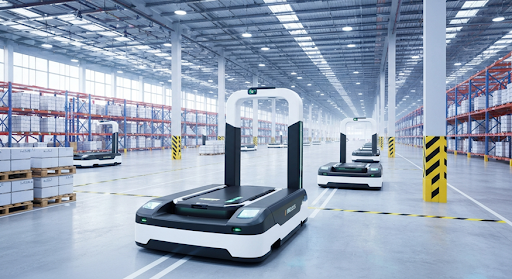Understanding Energy Data Management for Better Efficiency
Understanding Energy Data Management for Better Efficiency

Key Highlights
- Discover how energy data management helps businesses optimize energy consumption, reduce energy bills, and elevate operational efficiency.
- Learn the key role of systematic data collection and analytics in driving both sustainability and informed decision-making.
- Gain clarity on how energy data management differs from general energy management, focusing on its unique workflows.
- Explore the integration of advanced technologies like AI, IoT, and smart sensors to better interpret energy data.
- Understand how energy data management aligns with regulatory compliance while catering to industry-specific needs.
- Find out how EDM systems empower organizations to maintain transparency and enhance their delivery through detailed dashboards and reporting.
Introduction
Energy Data Management (EDM) is a central aspect of energy management and a key part of good energy management. This helps improve energy efficiency and makes normal work easier. EDM focuses on the right collection, analysis, and interpretation of energy data. When you use it, you can cut down on using too much energy and save money at the same time. Now, more businesses see how important it is to have strong data management for their energy needs. EDM is not just a nice thing to have—it's something smart companies must invest in. Using data-driven plans helps a business follow rules about energy and also brings a strong chance for better sustainability and higher performance. In the next part, we will look at what makes EDM stand out from the rest.
Defining Energy Data Management
Energy Data Management, or EDM, is about collecting and studying energy data in a clear and organized way. The goal is to help make smart choices about energy use. This helps businesses cut costs and pay attention to sustainability. With the help of EDM, people can see patterns in energy consumption and can use this knowledge to make things run better and smoother. The key idea is to lower how much energy is used and to follow any strict or stringent regulations.
EDM gives more than only a technical answer. Using detailed analytical tools, it shows businesses the exact numbers they need. By using real-time tracking and simple dashboards, companies know their energy behavior. This helps everyone match energy practices with company plans and future goals. So, companies can take steps for both cost reduction and being green. The process depends on strong data management and looks at all ways to bring about good optimization and results.
Key Concepts and Terminology
At its core, energy data means records that show how and when energy is used in buildings, factories, and other places. Good data management helps keep this information organized and easy to find when needed. Looking at important details like when energy use is highest or where things use more energy than they should, edm helps people make better choices.
Using analytics is important for understanding energy data. Special tools look at large sets of energy information to find problems, track how energy is used, and show ways for better energy efficiency and optimization. These tools give clear answers that help businesses plan well.
Dashboards also play a key role. They turn complex data into easy charts and give real-time updates, helping people make decisions right away. With these dashboards, organizations can take raw energy data and shape it into smart, sustainable actions. This method helps them reach their energy efficiency goals.
How Energy Data Management Differs from General Energy Management
While the two may seem the same, energy data management (EDM) and energy management do not be the same thing. Energy management is about finding ways to use less power and lower your costs. On the other hand, EDM is all about studying your energy data. It helps you understand how you use energy so that you can meet bigger goals for being efficient.
EDM is the backbone of all energy management work. By using smart data insights, EDM helps spot usage trends, find where things waste energy, and pick up on key patterns. This makes your work in energy management much easier and better. At its core, EDM means there is systematic collection of data by set workflows, and it always checks to make sure the data is right.
Tech is important in both areas, but it works in different ways. EDM uses high-tech tools, like cloud-based systems and smart prediction software. Because of this, simple energy-saving steps turn into smart, data-backed moves. EDM and energy management work together in different ways, but by linking them, you get a better and bigger energy strategy that works well.
The Importance of Efficient Energy Data Management

Efficient energy data management helps boost how a business works and saves money. It does this by managing energy consumption in a smart way. With strong data management, companies get useful insights. These help cut down on extra energy use and make sure their daily work matches up with energy efficiency rules.
EDM is just as helpful for reaching environmental goals. When a business uses less energy and lowers its carbon footprint, it also moves closer to meeting modern sustainability needs. When you can clearly see how energy is being used with data management, it is easier to make choices that help both the planet and the company’s bottom line.
Impact on Operational Efficiency
Operational efficiency comes as a big result of good energy data management. EDM puts the focus on data-driven insights. This approach helps make the best use of energy and keeps workflows productive.
Key benefits include:
- Optimized Equipment Performance: You get to spot the times when there is too much energy use or, on the other hand, when things are not used enough.
- Streamlined Processes: People who make decisions will get the chance to fine-tune how things run. This way, you can increase results but cut down on waste.
- Enhanced Maintenance: When you use sthe right predictive tools, it helps avoid unexpected system shutdowns that affect your energy usage.
- Real-Time Insights: Instant feedback means you can fix things right away. This leads to better reliability.
Also, with EDM, costs drop because less is lost to wasteful actions. It helps manage the demand for energy, keeps equipment from taking on more than it should, and helps asset operations work at their best. Data management and close attention to energy data bring clear value to every part of the business.
Benefits for Cost Savings and Sustainability
Cost reduction is one of the main benefits you get from EDM. Detailed reports let you see when your energy usage goes up. This helps you handle your budget better.
Sustainability is also important and goes together with saving money. For example, when you use less energy, you make fewer greenhouse gases. This helps companies follow new rules about the environment and also protect their profits.
EDM also helps with long-term goals. When you work toward sustainability, people notice. Your reputation gets better with those who care about the environment. In this way, companies can manage their money while also doing good things for the environment.
Core Components of an Effective Energy Data Management System

EDM systems are made to help with data collection and reporting. They have high-performance features. These systems bring all the important data together in one place. By using dashboards and tools for time-series checks, EDM lets you see what is happening right now.
A big part of EDM is making sure the system works well with the cloud and can keep up with growing digital needs using datalakes. These dashboards help give more transparency. They can also alert you if something looks wrong with data use. The dashboards change how different companies work together by helping them keep track of utilities every day.
Data Collection and Validation Processes
Data checks usually use systems that work by themselves. These machines read one thing at a time. They check the data every hour. This is because there is a steady demand for up-to-date results. Most checks are done the same way on a regular basis.
Analytical Tools and Reporting Capabilities
Analytical tools are key in data management for the energy industry. They help with the systematic collection and interpretation of energy data. High-quality dashboards are a big help. You can use them to see energy consumption, check operational efficiency, and track your carbon footprint. These features are important for regulatory compliance and help improve energy usage. This can have a big impact on the company’s bottom line.
Reporting tools also add transparency to the process. They let people involved see the data clearly. This means you can make better choices to reach cost reduction and support sustainability in the energy industry.
Integrating Technology for Enhanced Energy Management
With the use of the right dashboards and strong analytical tools, companies can see big changes in the way they handle energy management. When you use sensors and other Internet of Things (IoT) devices, there is more steady data collection. This means every bit of energy data can be looked at more clearly. The right technology makes it easier for people to make good choices and helps to improve operational efficiency. It also lets organizations check their energy consumption as it happens, in real-time. By taking in these new ideas, businesses can make their workflows better, spend less, and do more to lower their carbon footprint. In the end, it’s all about better interpretation of energy data for a good fit with today’s needs.
Role of IoT and Smart Sensors
IoT and smart sensors are key in modern data management for energy. These sensors and devices help with the systematic collection of energy data. Because of this, companies get better at tracking energy consumption and improve operational efficiency.
You can use real-time analytics and see clear reports on your energy use. This lets people understand the data and work on better ways to organize their workflows. When you use sensors and IoT, you save on energy costs and help with your company’s sustainability efforts by lowering greenhouse gas emissions.
By bringing IoT solutions into your work, you make a good impact on the company’s bottom line. It also helps you keep up with strict or stringent regulations. Using these tools is a strong way for companies to move ahead with new standards in energy data.
Leveraging AI and Machine Learning in Data Analysis
Artificial intelligence and machine learning help a lot in better data management for energy data. When companies use these tools, they can get low-cost analytics and improve energy efficiency. These new tools let people do a systematic collection of information and a simple interpretation of energy data. This gives the energy industry the chance to see energy use and equipment performance in real time. With AI, workflows get better. It also helps people in the company to make smarter choices. In the end, this leads to less money spent and a lower carbon footprint for the energy industry.
Conclusion
Using technology with data management in the energy industry helps improve energy efficiency. When you use new analytics tools, you can better see how energy is used and find ways to use less. This can make your everyday work better and help to cut down costs. Smart sensors and IoT devices also help with data collection, which can make sure you follow all rules and be more transparent.
As the energy industry grows, using new ideas and tools is very helpful. It supports your company’s goals to be more sustainable and helps your company’s bottom line. It gives you ways to save money and make your equipment work well. This is why keeping up with new technology, like smart sensors and good data management, is important for energy consumption, compliance, and overall company growth.
Frequently Asked Questions
What types of data are most important for energy management?
The key kinds of data you need for energy management are how much energy people use, when the most energy gets used, where the energy comes from, and how the equipment is performing. When you know and look at this information, you can make things run better, lower costs, and make smart choices for your energy management plan. If you use the data well, you will see big improvements.
How can businesses get started with energy data management?
To start with energy data management, businesses need to look at how much energy they use now. They should know which things matter most when watching energy usage. After that, they can use tools to look at the numbers and use IoT devices to get data right away. This helps them be more efficient and make better choices later. Using data management the right way makes their work better over time.
What are common challenges in implementing energy data management systems?
Common problems with setting up energy data management systems are getting data from different places to work together, keeping data correct and safe, paying for new technology, and teaching staff how to use new tools. Getting past these problems is important for good energy management. Good data management helps people use energy data better, so they can make smart choices and save energy.
How does energy data management help with regulatory compliance?
Energy data management helps you meet regulatory compliance according to ISO standards. It does this by making sure energy data and reports are accurate. It helps you track energy consumption and show that your group is following environmental rules. Data management also makes data collection easier. This way, you can spot mistakes quickly and lower the risks that come from not following the rules. With more transparency in your energy data, there is more trust between you, your stakeholders, and regulators.
Can energy data management solutions be customized for different industries?
Yes, energy data management solutions can be changed to fit what
different industries need. Customizing these solutions helps companies deal with their own job problems and rules. With the right data management, they can do their work better. It also helps them make good choices in many areas.



